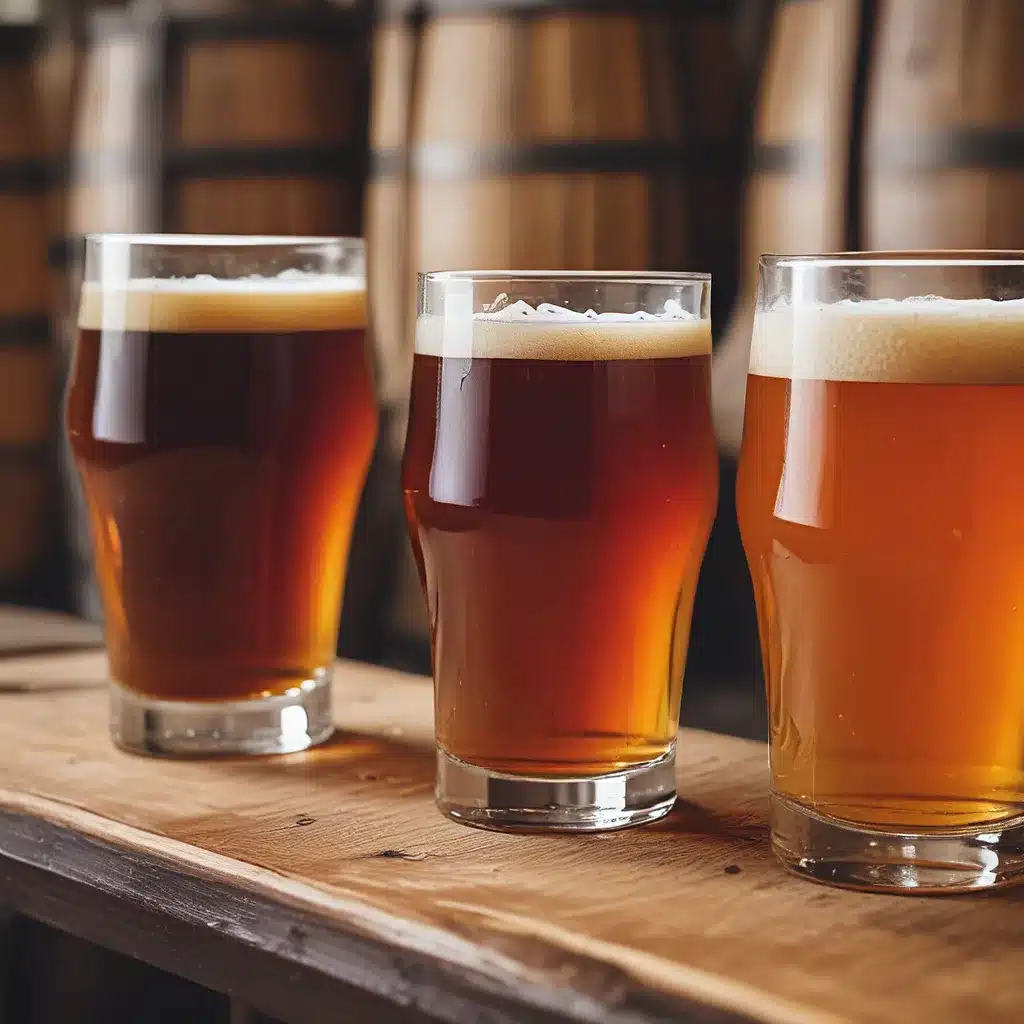
The Marvels of Malt
Ah, the wondrous world of craft beer – where science and artistry collide in a delightful symphony of flavors. As a self-proclaimed beer enthusiast, I’ve always been fascinated by the intricate processes that transform humble grains into the nectar we so eagerly savor. And let me tell you, the story behind craft beer fermentation is nothing short of captivating.
Let’s start with the backbone of any great beer: malt. This humble ingredient is the result of a centuries-old tradition, where raw grains, often barley, are carefully coaxed into a state of germination and then dried to perfection. It’s a dance of enzymes and temperature, where complex carbohydrates are broken down into simple sugars, ready to be consumed by the all-important yeast.
Pedal Haus Brewery knows a thing or two about the art of malt production. As they put it, “Malt production has been a timeless tradition dating as far back as medieval times. We at Pedal Haus, widely reputed to be the best brewery in Tempe, love comprehending the science behind malt production to widen the horizons of possibilities for new flavors to be born.”
And they’re not exaggerating. The subtle variations in kilning temperature and duration can profoundly impact the resulting malt’s color, aroma, and flavor profile. From the biscuity notes of pale malt to the rich, chocolatey undertones of dark roasts, each type of malt brings its own unique contribution to the brew. It’s a delicate balance, a dance of enzymes and thermal control, that ultimately shapes the character of the beer.
Hops: The Unsung Heroes
But let’s not forget the unsung heroes of the craft beer world – the humble hops. These fragrant flowers are responsible for imparting bitterness, aroma, and a whole host of complex flavors that elevate our favorite brews to new heights. And the science behind their magic is nothing short of captivating.
As Pedal Haus Brewery so eloquently puts it, “Hops are the supreme decider for any beer, contributing to bitterness, flavor, and scent, hence being essential for producing a product with a complex taste.” It’s all about those alpha acids, beta acids, and essential oils – the building blocks that give each hop variety its unique personality.
…
The Yeast Whisperers
But perhaps the most fascinating aspect of craft beer fermentation is the role of yeast – those humble, single-celled organisms that perform the true magic. As Pedal Haus Brewery so eloquently puts it, “All about that yeast is what we shout when the topic of craft beer brewing comes up. The key and brail for creating alcohol and carbonation in the beer.”
These microscopic marvels are the true alchemists, transforming the sugars from malt and hops into a symphony of flavors, aromas, and, of course, alcohol. But it’s not just a simple matter of yeast consumption. Oh no, my friends. The yeast are like the maestros of the fermentation orchestra, producing a myriad of compounds that give each beer its unique character.
Aldehydes, esters, and ketones – these are the building blocks that define the flavor and texture of our beloved craft brews. And the temperature at which the yeast work their magic is crucial. As Pedal Haus Brewery notes, “Yeast cells multiply in the wort during fermentation, breaking down sugars. The myriad of compounds produced at this stage is what gives the beer its unique flavor, aroma, and texture.”
But the yeast whisperers at Pedal Haus don’t stop there. Oh no, they’ve taken their love of science to the next level, experimenting with wild yeast strains and even propagating their own in-house cultures. It’s a level of dedication and attention to detail that truly sets them apart as one of the best breweries in Tempe.
The Art of Aging
And the journey doesn’t end with fermentation. Oh no, the true magic happens during the aging process, where the beer is carefully transferred to another vessel, often a barrel, to mold its flavor over time.
As Idaho Brewers United executive director Sheila Francis says, “Post-fermentation the most common practice is to transfer the beer to another vessel, barrel, for aging and letting it mold its flavor.”
It’s a delicate balance, this aging process, where temperature and time conspire to create something truly magical. The beer’s character evolves, the flavors deepen, and the result is a brew that’s not just a drink, but a work of art.
Pushing the Boundaries
But the true magic of craft beer fermentation lies in the relentless pursuit of innovation and experimentation. As Dr. Michael Kuzyk, founder of Category 12 Brewery, puts it, “Here we are interested in wild yeast strains or Belgium derived yeast strains that tend to add really cool aromas for everything from bubblegum to banana to clove to fruit.”
It’s this spirit of adventure and a deep understanding of the science behind brewing that sets the true craft beer pioneers apart. They’re not content to simply follow the well-trodden path; instead, they’re actively pushing the boundaries, exploring new frontiers, and uncovering the secrets that lie at the heart of each and every fermentation.
And the best part? We, the thirsty public, get to reap the rewards of their tireless efforts. Every sip of a craft beer is a testament to the dedication, passion, and scientific prowess of the brewers who’ve poured their heart and soul into its creation.
So the next time you raise a glass of your favorite craft brew, take a moment to appreciate the incredible journey it’s taken to reach your lips. From the fields of barley to the carefully curated yeast strains, every step of the process is a masterclass in the art and science of fermentation. And trust me, the Up & Under Pub is the perfect place to explore this liquid alchemy, where the perfect pint and a good meal come together in harmonious bliss.

